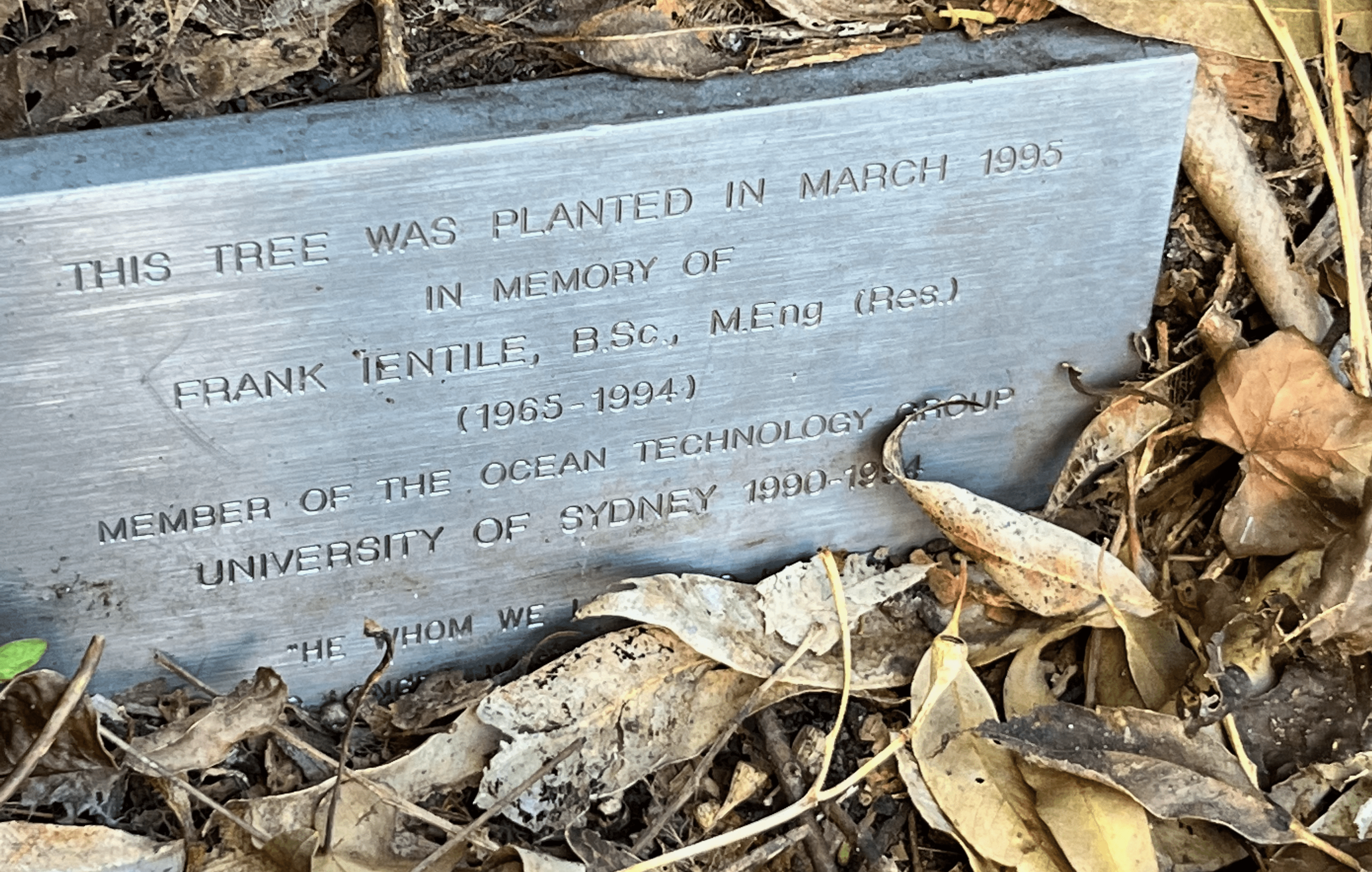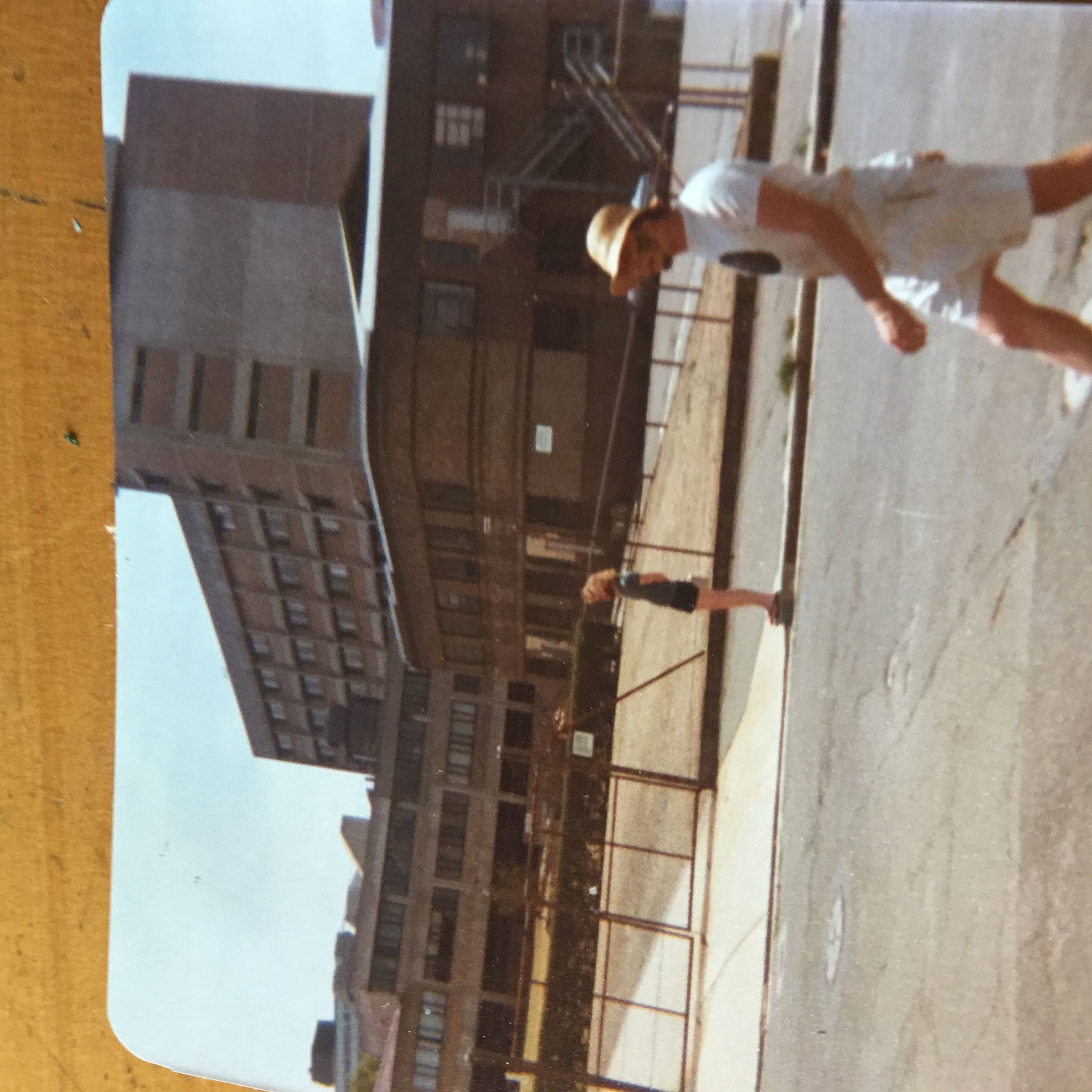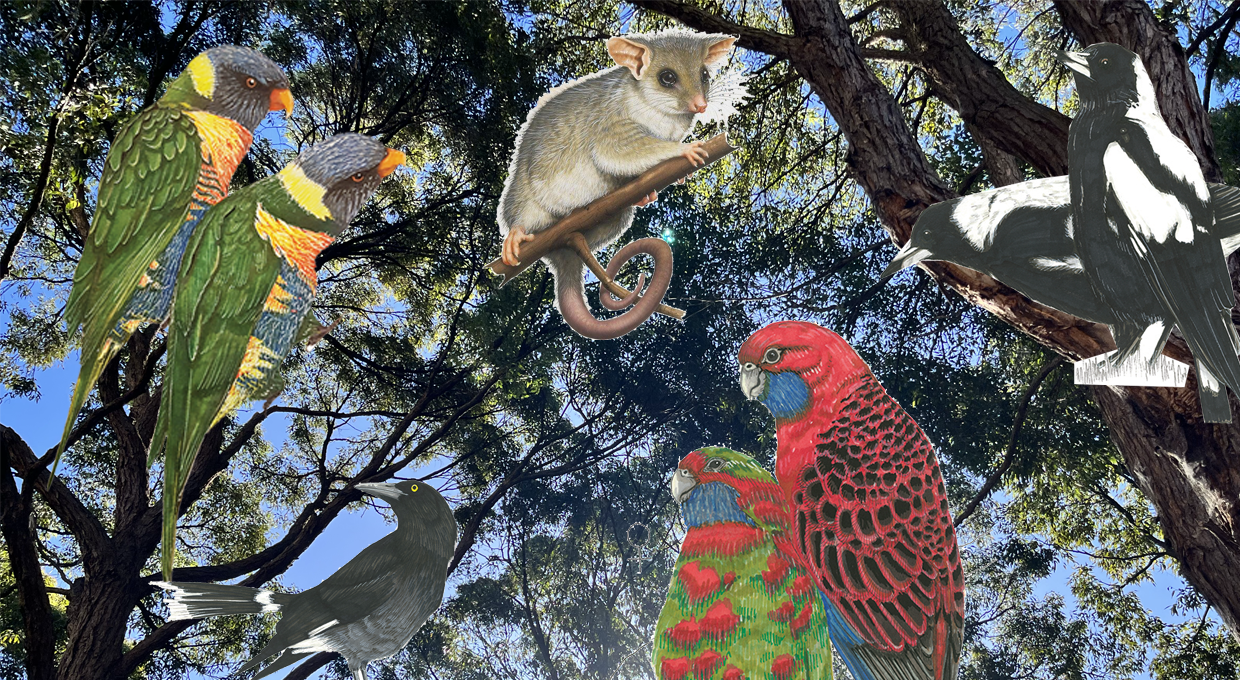The Friends of Darlington Eucalypt Grove are facing the University’s third attempt to remove a group of Tallowwood trees in the Engineering Staff car park adjacent to Shepherd Street.
Residents of Darlington received a letter stating that the University would be “commencing construction of a three-storey building” in the Rose Street car park. This would involve the felling of a number of well-established trees that serve as a habitat for local bird and possum populations. Concerned residents recently met at a local café, to share anecdotes of the bird calls, possums, and ongoing development and redevelopment of the historic area.
The trees are an important part of local tree cover, and are reported to host possums, flying foxes, rainbow lorikeets, cockatoos, kookaburras, currawongs, butcher birds, Australian miners, wattle birds, magpies, ravens, and, on occassion, a migrating koel birds from New Guinea. The presence of these animals is particularly significant as populations of magpies and kookaburras are declining, and many species of possum are classified as vulnerable or endangered.
Additionally, the trees are a part of the University’s canopy cover, and contribute to regulating heat and cooling the road area. Due to bitumen and other hard surfaces, urban areas absorb and radiate more heat, and having canopy cover is a way to avoid “urban heat islands”.
Residents note that it is hypocritical for the University to destroy these trees as the Greens, currently in control of Sydney City Council, have pledged to increase tree cover as part of their urban forest strategy. Similarly, the University itself has pledged to “enable 30% canopy cover by 2030” on their campuses. Questions were also raised by residents about the fate of a tree planted in memoriam of Frank Lentile, a graduate of the University of Sydney.

Local resident Peter Prineas has lived in the area for 32 years, and stated that there was “a very noticeable increase in variety of wildlife”, since the trees were first planted. Mary Hanson, another long-time resident, recalls her time back in 1988 watching the construction of a concrete campus grow alongside the trees, recollecting her enjoyment of bird calls amongst this grove — “I have been amazed by what I’ve heard. I came from the bush, and I have never heard anything like I’ve heard.”

Residents have been organising against the removal of these trees and rampant development of the area for over nine years.
In 2014, the University proposed the construction of a “decanting space”: additional accommodation that would serve to house people displaced by ongoing renovation and redevelopment of existing university accommodation. The Friends of Darlington Eucalypt Grove campaigned to fight the development, collecting 146 signatures for a petition that was presented to the University. Despite this development having already been approved, the University did not proceed with construction.
A change in planning rules meant that as “State Significant Development”, the University would not be required to submit a development application to the local council, and could instead appeal to the State authorities. In 2017, USyd management took advantage of this to plan a three-storey teaching building that would require the removal of 60% of the grove. Strong opposition from residents coupled with a fall in attendance during COVID meant that this development did not proceed.
On July 5th, residents received notice that the University would be proceeding with a three-storey development that would remove 60% of the grove. The construction was predicted to commence in mid-July — meaning residents were not given the opportunity to voice dissent on the project, nor were details available through typical council outlets. University management predicts that development will conclude midway through 2024, with the letter outlining six-day work weeks for construction and traffic controls set to be implemented.
Darlington residents have long fought back against these developments, from the original sell-off in 1960 that seized 416 houses to the preservation of this grove. Despite the mixed efforts of USyd’s community liaison, residents have never had the opportunity to meet with the Vice Chancellor, nor to present their 2014 petition to the relevant authorities. Prineas noted that they only received back “dismissive” letters that “pretend[ed] to care for their neighbours”. The most recent letter offers no opportunity to dissent or critique the University’s constant construction.
Despite the recurring construction proposals, minimal information is available online to the public. This has left local residents in the dark, and having to fight for more information. Hanson noted that despite informing residents of a proposed three-storey building, it fails to reveal that “it’s elevated…so that makes it four-storeys, because that’s the height.”
Many of the buildings within the Engineering Precinct are classified between moderate to high heritage significance. The open spaces surrounding these buildings are marked as having little heritage significance, leaving them more susceptible to development, as pointed out by local resident Rod Haslam.
Haslam underlined the peculiarity of the situation, “they want to block that space off from the residents…normally all the buildings they build are eight stories because it’s kind of more efficient, but this one’s only three. It’s hardly worth doing it.”
As the University can proceed with fast track construction through the label of State Significant Development, Prineas points out that this “permits them to put in 2,000 square metres without any consideration of alternatives, any consideration of environmental impact.
“This is just under the threshold. So, it’s pretty nasty for the University to do that.”
Over the years of development proposals, the proportion of trees that were to be cut has wavered between 85% to 60%. Current NSW legislation regulates for only needing a thin screening of greenery between proposed buildings and residential areas, resulting in only the front row of Tallowwood trees to be saved, whilst the back rows are to be removed.
Original proposal from 2014
Universities and TAFE establishments complying development legislations
A spokesperson for the University commented that “We are currently undertaking a redevelopment of our Faculty of Engineering and Information Technologies precinct, to better support world-class teaching and research and meet the changing needs of the 21st century and our student growth.
“Feedback from the community has helped shaped the three-storey educational building design, in particular retaining the front row of trees fronting Shepherd Street to ensure the provision of visual and acoustic privacy to Shepherd Street residents. A number of trees will remain in place, new trees and shrubs will be planted, and the building will remain back from the footpath behind the tree canopy.
“We’re keeping our local community actively informed of our plans and are following all the planning processes set out by the state government.”
However, conversations with residents prove that communication between the University and the community in regards to the construction of the building, and the impact it would have on the surrounding environment, has been poor.
Although proposal’s were first produced in 2014, the University had long intended to develop on this land — with it being first mentioned in their Capital Development Plan in 2002 – a ten year projected commitments plan.
University of Sydney Grounds Conservation Plan from October 2002
With recent shortcomings of “high heritage significant” building PNR, it is clear that the University are “not looking after the heritage they’ve got” as stated by Haslam. Although the University can create green spaces at times such as “the successful Cadigal Green,” and the initial planting of the Tallowwood Grove in the 70’s, the University is also able to be wrong.
Prineas added, “I know they’re wrong because when they did the overall plan, it was available for public comment, the thrust of it was to open up the University to Darlington on this side. They clearly don’t want to do that [anymore].” Residents noted that much like the community resistance that led to the protection of Darlington School, the same efforts need to be brought back to protect the habitats of many species within Darlington Grove.
Thank you to the residents of Darlington — Keri Bell, Mary Hanson, Rod Haslam, Peter Prineas, and Anthony Samuels — for their time speaking about this cause.





